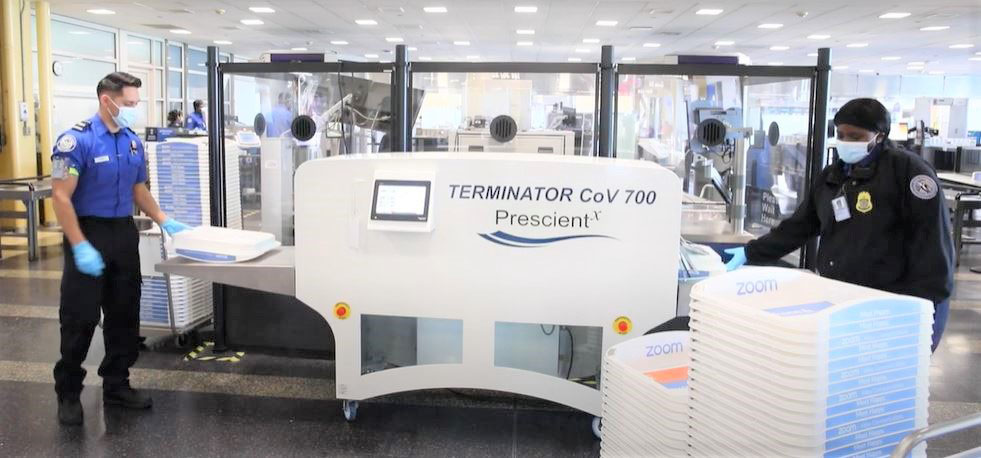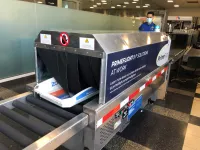 One of the two models of Ultraviolet-C light bin disinfecting units that will be assessed at Ronald Reagan Washington National Airport. (TSA photo)
One of the two models of Ultraviolet-C light bin disinfecting units that will be assessed at Ronald Reagan Washington National Airport. (TSA photo)
WASHINGTON – The Transportation Security Administration (TSA) launched an assessment of new technology that uses Ultraviolet-C (UV-C) light to disinfect airport checkpoint bins in the agency’s continuing effort to provide safer checkpoint experiences by working to prevent the spread of COVID-19 and other viruses and bacteria. This initial assessment will occur in two checkpoints at Ronald Reagan Washington National Airport (DCA).
“TSA continuously tests and deploys innovative technologies into operational checkpoint environments that seek to improve the checkpoint experience for airline passengers,” said Scott T. Johnson, TSA Federal Security Director for the airport. “We are excited to test technologies that might prove effective in disinfecting checkpoint bins and eventually provide another layer of protection against viral and bacterial spread.”
TSA’s Innovation Task Force, which is spearheading the demonstration, is eager to further assess these technologies in the checkpoint to determine the equipment’s ability to reach the required UV-C dosage and reduce the number of pathogens on the checkpoint bins. The assessment seeks to determine efficacy in creating a more hygienic security checkpoint, while maintaining operational efficiency and balancing space and staff requirements.
“When our team evaluates innovative checkpoint solutions, we employ a scientific methodology and fully assess the costs and benefits of each potential technology,” said Melissa Conley, Executive Director for Capability Management and Innovation, who oversees TSA’s Innovation Task Force. “These operational assessments are necessary as we consider any new technology, including those born out of the COVID-19 pandemic, as a permanent solution across our screening operations environment.”
The standalone conveyer belt systems expose bins directly to UV-C light as the rollers advance them through the system. In the lab environment, TSA conducted efficacy testing using digital and sticker dosimeters placed on the bins to evaluate UV-C dosage, safety and processing times. TSA anticipates the equipment will have no impact on passenger screening times or the efficiency of the checkpoint screening process.
Please visit our website at https://www.tsa.gov/itf for more information on how TSA is accelerating new technologies and solutions at checkpoints around the country.

